What Is A Flatbed Truck Good For?
A flatbed truck is a truck without an actual truck bed, but with a flat surface instead. Typically, these types of trucks are used to transport heavy loads that won’t be compromised in bad weather or on rough roads. Their unique bed design is ideal for loads that would be too wide for a truck with an enclosed body.
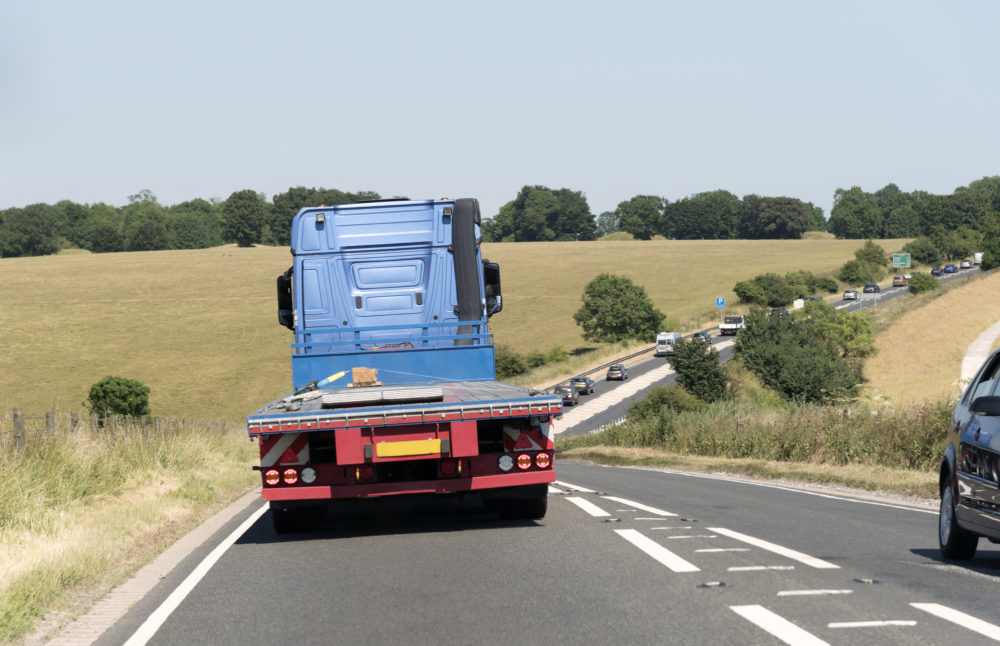
Contents
They are great for a plethora of applications, whether it’s construction, farming or simply hauling things. Some things you can transport with a flatbed truck are: construction materials and debris, hauling scrap metal, transporting heavy machinery, moving tired bales, shipping super sacks, building materials and even small vehicles.
A flatbed is considered a Class B vehicle due to size and weight. However, there are also semi flatbed trucks. Flatbed trucks come in all kinds of shapes and sizes:
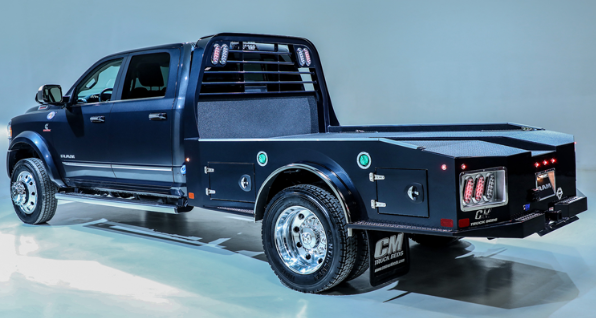
Source: www.comvoy.com
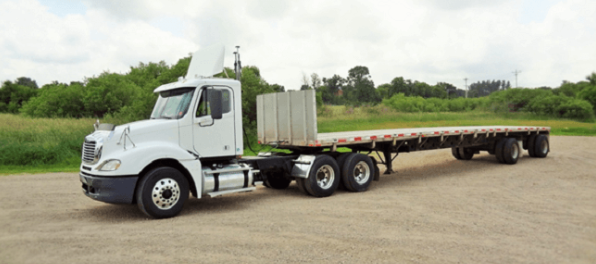
Source: www.fueloyal.com
Common Uses Of Flatbed Trucks
Like mentioned above, there are different applications for a flatbed truck, as they are useful in many different industries: from farming to construction, from transportation to debris hauling, flatbeds are versatile and basically “big boy” trucks.
When used for moving building materials, flatbed trucks can haul anything from pallets of bricks to wood to metal beams. The wider flatbed truck area provides extra cargo space.
When used for moving heavy equipment, you can use a flatbed truck for huge wind-turbine parts, machinery components or even military equipment. The cargo is secured with straps or chains.
When used for scrap metal removal, one can use a container and place it on the flatbed and then fill it with scrap metal.
When used for transporting tire bales, one can just load and stack them onto the flatbed and secure them. The nice thing about using a flatbed is that you have a flat surface that helps with the stacking and you can also clean up the flatbed easily from any debris, as opposed to a traditional truck bed.
7 Varieties Of Flatbed Trucks
The flatbed top deck is closest to the cab of the truck and is 60 inches in height and 11 feet in length. The lower deck drops down all the way to the wheels, allowing for the more vertical room. The bottom deck is 36 inches up to 42 inches off the road. It can also be between 37′ and 41′ in length.
A standard flatbed trailer typically runs between 48 to 53 feet long, 8.5 feet wide, and 5 feet tall. The load height is up to 8.5 feet tall and the weight limit is 48,000 lbs.
This kind of flatbed can be used to haul pretty much anything heavy, bulky or messy, as long as it can be strapped down and secured safely, and remain within the above-listed load limits.
There are seven varieties of flatbed trucks, which are listed below:
Standard Flatbed
This is the regular pickup truck that is converted into a standard flatbed. The conversion can run anywhere from $1,000-$14,000, depending on your choice of setup, materials and customization. This flatbed is nimble, yet versatile in use and can take a beating when it comes to hauling things. It is easily loaded due to the universal manageable height of the trailer.
The standard flatbed can also be a semi trailer. The max loading weight is 48,000 lbs.
Single Drop Trailers (Stepdeck)
This flatbed consists of two decks, the top and bottom deck. The bottom deck is used for cargo that is too tall to be transported with the standard flatbed. The max loading weight is 48,000 lbs.
Double Drop Trailers
These flatbeds are a gooseneck-type trailer. “Double drop trailers are usually used for hauling equipment that can be loaded onto the trailer such as forklifts, cranes and agricultural machinery. On RGN double drop trailers, the neck is detached from the trailer, allowing equipment to be driven on the trailer from the front.” (Source: midcosales.com.)
Double Drop With Detachable DeckDecl (Lowboy)
This kind of flatbed is a good choice for cargo that would exceed the height limitations, as it is closer to the ground. The max towing capacity is 40,000 lbs, but can be up to 80,000 lbs, depending on the number of axles used.
Stretch Flatbeds
The stretch or “extendable’ flatbed has more room for a larger load than a regular flatbed can provide. The flatbed stretch trailer’s length provides support for longer loads and eliminates the possibility of overhanging freight.
Stretch Single-Drop
Stretch single-drop deck trailers are designed to carry and haul truck loads that are too long for the length restrictions of a standard or traditional step deck. They provide extra support, preventing freight overhang.
Stretch Double-Drop
“A stretch double drop trailer is designed for oversized freight that is too long for a standard step deck trailer due to legal length restrictions. It also provides support, preventing overhang. The lower deck allows loads up to 10 feet in height. The trailer is designed with a longer piece, or well, at the trailer’s back deck and middle portions, typically measuring 25 feet to 29 feet.
The maximum legal freight weight for a stretch double drop is 45,000 lbs.” (Source: www.saferack.com)
What Size Flatbed Can You Put On A Truck?
The standard size for flatbeds is generally 48”- 53” long with a bed that sits at 42”- 60” high and is the least expensive option.
To measure a truck bed size, you follow this measurement and calculation: “To calculate your truck bed’s square footage, you’ll simply multiply the vehicle’s length by the width, in inches, and divide by 144. Here’s a quick example: Assume a truck bed measures 48 inches in width by 96 inches in length. We would calculate: 48 x 96 = 4,608. We would then calculate: 4,608 ÷ 144 = 32, so our truck bed has an area of 32 square feet.” (Source: www.jdpower.com.)
The installation of a flatbed on a truck bed is not that complicated. There are many videos on how to do it, as well as step-by-step manuals on various Websites, such as this one: highwayproducts.com. The most complicated part of the install is to set the bed properly onto the truck frame. Smaller trucks can be converted by having several people help with lifting and placing the corners onto the frame.
Then, according to Highway Products, these are the next steps:
- “Move any electrical wires on the truck frame out of the way. Most wires are fastened using clips that pop off with a screwdriver or pliers. If your flatbed has taillight mounts and sidelights, make sure the wire leads to the lights are below the surface of the frame.
- Position the metal spacers or rubber cushion washers on the bed-bolt holes at the truck frame. Use a hoist to lower the flatbed onto the frame, or ask assistants to help position the bed on the frame. Align the bed-bolt holes as closely as possible with the holes in the frame.
- Insert the narrow end of a gad pry bar into one of the bed-bolt holes at the front of the flatbed. Use the bar to maneuver the bed-bolt hole directly over the hole in the truck frame. Insert a bed bolt through the bed and fully through the truck frame to hold this corner of the bed in place.
- Align the remaining bolt holes using the gad pry bar and insert a bed bolt in each hole as you go.
- Organize the lock washers and nuts in sets and place each set under the truck in proximity to the bed bolts. Put a lock washer and nut on each bolt and tighten the nuts clockwise with a socket and ratchet.”
(Source: highwayproducts.com)
If you have this job done in a shop that does this professionally, it should take no more than 3-5 hours total, depending on your choice of flatbed and your existing configuration.
How Much Does A Flatbed For A Truck Cost?
A new flatbed tow truck can cost easily anywhere from $75,000-$130,000. One can find a used one starting at around $40,000, depending on age, mileage, brand and condition.
Bradford offers American-made flatbeds in different sizes for different applications, made from either steel or aluminum. They also have a dent/scratch sale where one can purchase discounted flatbeds.
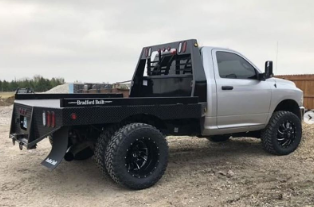
Source: www.bradfordbuilt.com
Third-party install companies offer flatbed installs for as little as $850 with install times as quickly as 3 hours.
Hillsboro also offers American-made aluminum- and steel-flatbeds in different standard sizes. They have quality products and have been providing quality flatbeds since 1968.
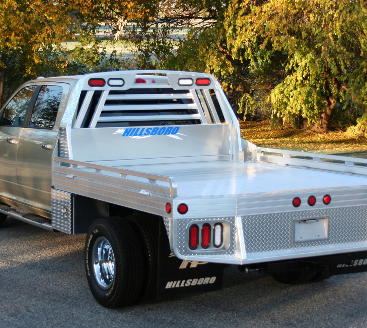
Source: www.hillsboroindustries.com
There are step-by-step protocols that help one convert a truck to a flatbed; although one should not attempt this without at least some basic mechanical knowledge and skills. Many people just hire a professional with the conversion.
Below is the process if you want to replace the truck bed with a custom/self-made wooden flatbed.
- Basically, the first step is to remove the existing bed.
- Since there is electrical wiring that goes to the tail lights etc., the next step is the disconnect and removal of the tail lights.
- Next, cut the metal pieces to size.
- Then, Weld the steel components to the bed frame and clean them properly. 4. Cut the wooden boards with a saw and paint them to prevent weather damage.
- Mount the lumber behind the vehicle.
- Rewire and reinstall the taillights.
When doing a project like the one listed above yourself, you can easily spend $1,000 on materials only.
When replacing a truck bed with a custom-made aluminum or steel bed, there are companies who charge $850-$1,000 for a conversion when you purchase the flatbed from them. The flatbed can cost anywhere from $3,500-$14,000.
Who Makes Flatbeds For Trucks?
Some of the best flatbed manufacturers are Zimmerman, CM, Bradford Built and Knapheide.
There are companies like Country Blacksmith Trailers that sell aftermarket custom flatbeds, as well. You can go through a specific manufacturer or a third-party that offers different brands and can help you figure out the best fit based on your use and application.
A Zimmerman flatbed runs anywhere from $5,000-$18,000, depending on size/length.
A CM flatbed costs between $3,800-$10,800, depending on size/length.
A Bradford Built flatbed price range is between $4,400-$8,700, depending on size/length.
A Knapheide flatbed can cost anywhere from $6,700-$12,600+, depending on size/length.
Knapheide is more expensive because they offer service body truck beds, with lockable storage containers and contractor boxes.
When looking at custom-built flatbeds, it really depends on the material choice: you can spend anywhere from $1,000 for a wooden bed (with a steel frame) or starting at $3,000 for a basic steel flatbed. But to be honest, with custom work, the sky’s the limit when it comes to price since you can design pretty much anything.
Check out this Website for some ideas: https://highwayproducts.com/custom/flatbed/.
Buying vs. Renting Costs For Flatbed Trucks
Medium duty flatbed trucks cost between $80,000 and $120,000, while a daily rental is about $69-200.
Heavy duty flatbed trucks cost between $120,000 and $250,000. Some companies rent them out for $99/day plus mileage, and there are private party platforms that facilitate rentals, as well (think: AirBnB for trucks).
A flatbed tow truck starts at about $40,000.
(Source: www.miramarspeedcircuit.com)
Remember that a flatbed truck that is over 26,000 lbs in GVWR might require a CDL (commercial driver’s license) to drive and operate.
Benefits Of Flatbed Trucks
There are several different benefits that a flatbed truck can offer to its customers:
- Load variety
- Heightened safety (tarping and securing load/cargo , incl. pre- and post-inspection)
- Better contract/work for truckers due to load variety/versatility
- Higher pay (on average) for flatbed truckers, up to $13,000 more annually
- Dedicated transport (secured and tarped)
- Conducive to oversized loads.
Overall, a flatbed truck is more versatile, can carry more cargo and bulkier items and makes it therefore a better choice for hauling large or heavy loads. The only issue is that one has to secure the cargo with straps, chains and tarps; however, this makes transport more secure and deliberate. Many customers who need transport of expensive equipment are willing to pay extra for the added care and quality of secured transport, so this versatile truck is also a lucrative investment to add to your fleet.
FAQs
What is the longest flatbed truck?
The longest flatbed truck is 80 feet.
What is the max weight on a flatbed truck?
The max weight of a flatbed truck is 48,000 lbs.
What is a flatbed truck camper?
A flatbed truck camper is a flatbed truck with a topper camper unit mounted on. Because of the flatbed setup, this type of camper offers additional storage space for a water heater, water tanks, extra batteries, and propane as well as more spacious living quarters. Some even have storage boxes mounted at the back of the camper.
What is the best wood for a flatbed truck?
While some use mahogany or teak for durability, others use rough oak for cost reasons. Finally, main manufacturers use “Apitong also known as Keruing. Apitong / Keruing is used by all major flatbed trailer manufactures like Great Dane, Fontaine, Wilson, Transcraft, MAC, Wabash, Doonan Specialized Trailer, XL-Specialized and more.” (Source: www.ohc.net.)
What is a Moffett on a flatbed truck?
A Moffett is a forklift truck, mounted to a lorry. With a Moffett, a delivery driver can self load and unload at destinations without forklifts, or without having to wait for on site forklift trucks and operators.




